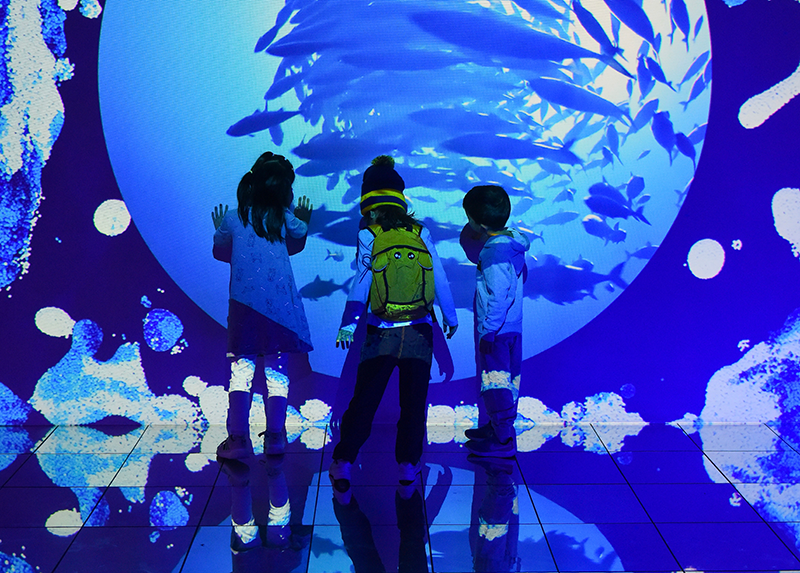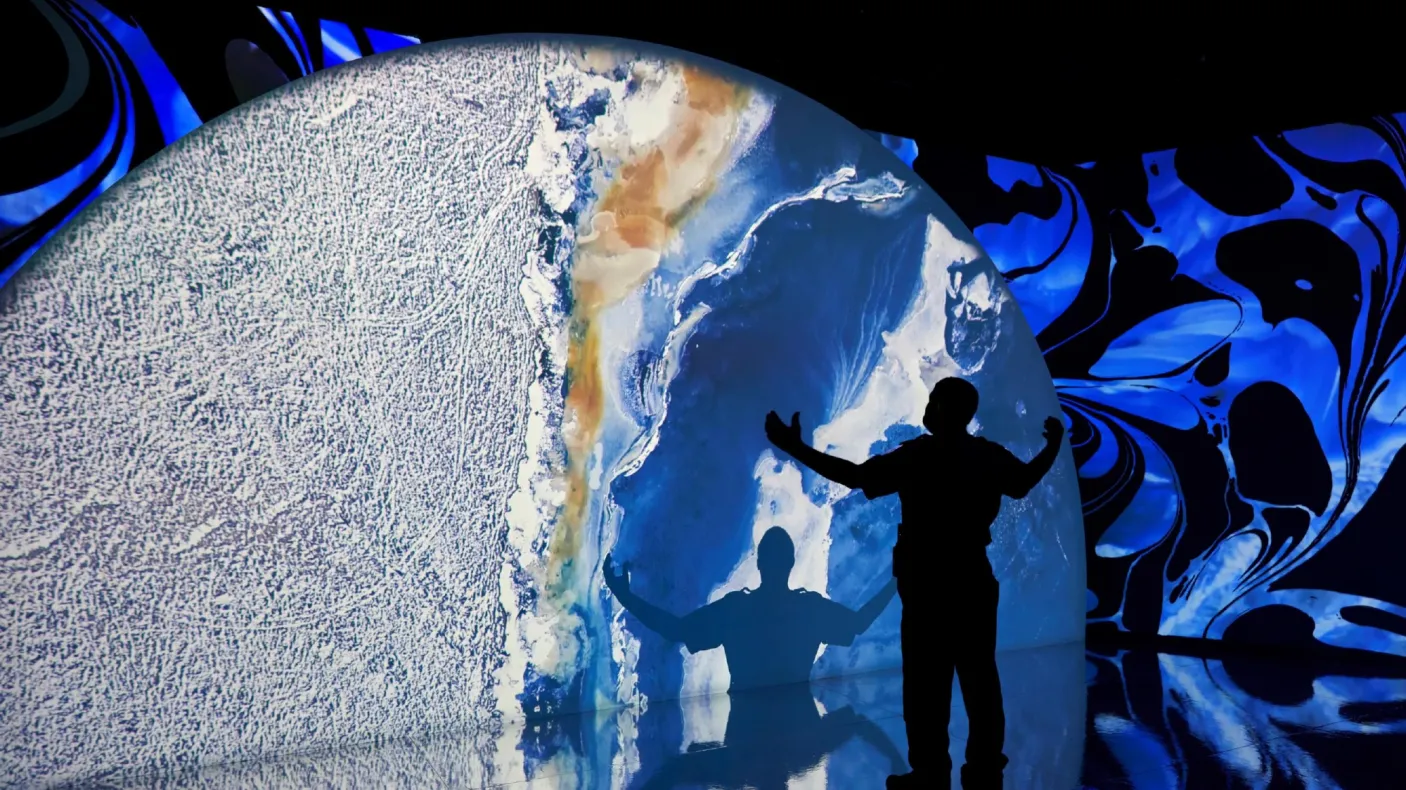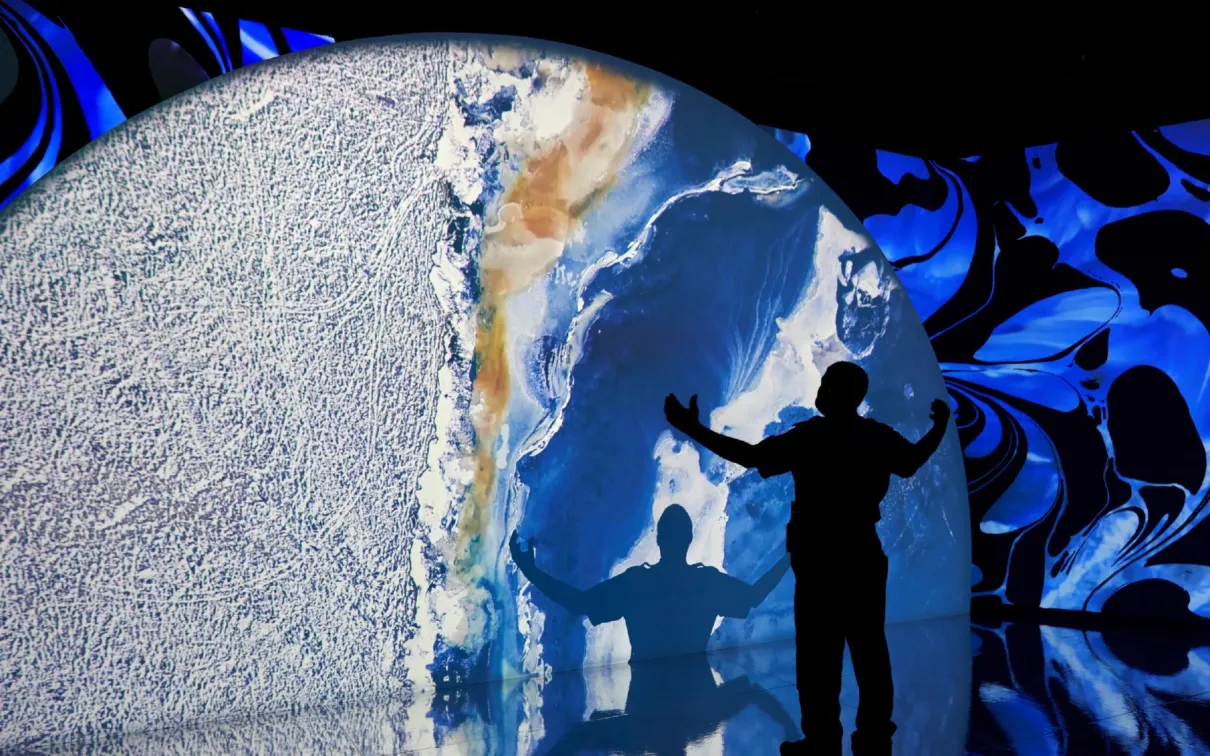Experience Nature in Brilliant Colour at ROM starting December 14
Published
Category
Press Release
Marvel at the striking colours of the natural world in this rainbow of an exhibition.

TORONTO, September 24, 2024 – Nature in Brilliant Colour, an exhibition revealing the dynamic ways nature communicates through colour, opens at ROM (Royal Ontario Museum) on December 14. Created by the Field Museum in Chicago and newly enhanced with highlights from ROM collections, Nature in Brilliant Colour will take visitors on a kaleidoscopic journey through the vibrant hues of our planet.
Anywhere you look in nature, colour holds meaning. From the fiery reds of warning signals to the soothing greens of plant life, Nature in Brilliant Colour will alter the perception of guests as they travel through a series of spaces, each dedicated to a colour of the rainbow. Through over 300 specimens, grand projections, and shifting soundscapes, this exhibition provides a transformative experience that will deepen appreciation for the complex artistry of our world and celebrate its bright and untamed beauty.
“From the vivid green of an emerald to the shimmering beauty of a peacock feather, the wild world is saturated in colour,” says Josh Basseches, ROM Director & CEO. “And yet, most of us know so little about the role of colour in nature – which is just one reason why Nature in Brilliant Colour is so intriguing. Using a combination of immersive projections, soundscapes, and diverse specimens, this exhibition invites visitors to discover the power and meaning of colour in the natural world.”
Kids – and kids at heart – will especially enjoy Nature in Brilliant Colour, which engages all the senses as it takes viewers on a sensory and tactile journey that feels like passing through a rainbow. A wide range of activities allows visitors to learn more about how colour can be perceived or used – including displays concealing a hidden world of minerals, lichens, and animals that glow under UV light; a wall illustration that reveals secret drawings through the use of colour projections; a fun photo challenge where participants can unearth camouflaged creatures; and many more opportunities to engage with how colour plays a vital role in nature.
Visitors will delve into the colour spectrum as they make their way through multiple spaces, each representing a colour of the rainbow. In this special exhibition, guests will learn how to decode the hidden messages that different colours can deliver to provoke emotion, signal alarm, or create disguise and illusion. Guests can also experience some of nature’s mysteries that are hidden in plain sight: creatures that change colour, plants and animals that have the ability to emit an eerie glow, and shades of colour that the human eye can’t detect.
Throughout the exhibition, visitors will marvel at nature’s multicoloured wonders – such as spectacular minerals and gemstones, including sparkling red rubies, tranquil green malachite, shiny yellow gold, and snowy white calcite crystals.
“You can't help but be fascinated by nature's colourful display,” says Dr. Kim Tait, Senior Curator, Teck Endowed Chair of Mineralogy. “I loved looking at all types of rocks when I was a kid, and this exhibition will be equally inspiring to anyone with a burgeoning interest in the spectacular beauty of natural sciences.”
Visitors will learn how nature communicates through colour to send a wide variety of messages: the monarch butterfly’s bright orange wings are a warning to predators that it is not a tasty meal; the peacock’s fan-like shimmering tail feathers are used to attract a mate. And while some use colour for camouflage, such as a striped chipmunk hiding among tree branches; many plants loudly broadcast for assistance by displaying eye-catching petals that instruct bees where to find a meal of nectar in exchange for pollination.
How the human world has learned about colour from nature is also explored – including how we developed ways to manipulate colours to communicate and convey meaning. For thousands of years, people learned to create our own pigments and dyes through ground-up minerals or crushed animal parts – such as the ochre pigment from yellow-brown clay or the red extract from cochineal insects – and nature’s influence continues in our modern-day colour choices and culturally associated meanings.
ROM Members will have the first opportunity to attend Nature in Brilliant Colour during the Member Preview on Friday, December 13, from 10 am to 5:30 pm and Saturday, December 14, from 10 am to 12 pm.
Image Credit: © Denver Museum of Nature & Science


